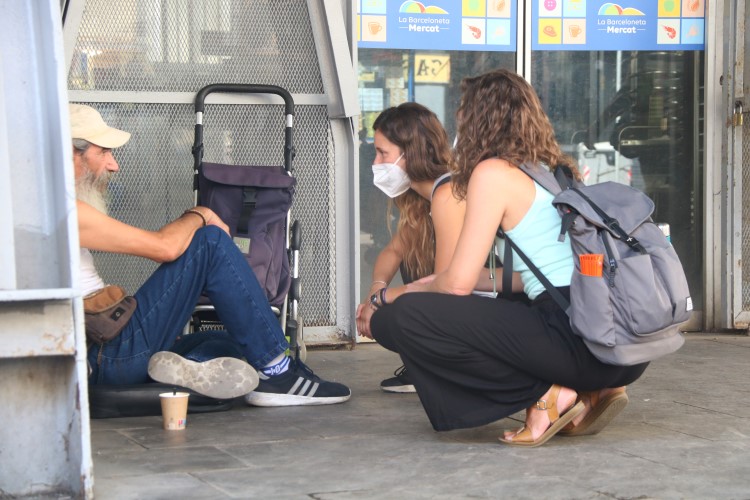Nearly half of homeless people in Barcelona have lived on streets for over two years
Arrels Foundation warns that 15% cannot meet their basic needs and 18% report mental health problems

47% of homeless people living on the streets in Barcelona have been doing so for more than two years. Every night more than 1,000 people sleep rough on the streets of the Catalan capital.
These are the latest figures from the Arrels Foundation, using data from 2021. The organization warns that actual figure of rough sleepers is almost certainly higher, given that some people deliberately avoid being counted as they don't feel safe.
The number of people sleeping on the streets has not decreased over the last three years. There has in fact been an increase of 62% in the last 13 years, since the first count undertaken in Barcelona in 2008 discovered 658 people.
People who are homeless does not solely include those who sleep rough, but also, for example, people staying overnight in hostels, in overcrowded flats, temporary shelters, or the homes of family and friends.
The Homeless Care Network (XAPSLL) says 2,808 people sleep in public and private shelters in the city, while Barcelona City Council estimates that 865 people live in informal housing and improvised settlements.
The total number of homeless people in Barcelona is therefore estimated to be 4,737, an increase of more than 500 on the 4,200 recorded in 2020.
Male, migrant, out of work
According to the Arrels census, 91% of people living on the streets are men and 7% are women, with an average age of 43. Seven out of 10 are migrants and have been in sleeping rough for about 4 years and 8 months on average.
The vast majority have no stable job or income, and nearly three-quarters of those surveyed by Arrels had no income at all. Only a quarter say they receive regular income of some kind, including social benefits or a pension.
14% of those surveyed reported that they ended up living on the streets after suffering a traumatic experience, such as sexual, physical or psychological abuse. The percentage rises to 19% for women and 30% for people aged 26 to 35.
Physical and mental health problems
Compared to previous years, Arrels has identified an upward trend in the number of people with a high degree of vulnerability, more than 20% of the total.
In fact, 43% of those surveyed had a health problem, with 26% having chronic disease of the liver, kidneys, heart, stomach or lungs.
There has also been an increase in the number of people with mental health problems, specifically 18% (twice as many as in 2019 and four times as many as in 2016).
40% of people living on the streets have visited emergency medical services in the last six months.
Arrels found that 15% of people cannot meet their basic needs, to do with hygiene, food and finding a place to store their belongings, among other things. Four out of 10 people living on the streets have not been attended to by any social worker in the last six months.
Ciutat Vella, Eixample, Sant Martí and Sants-Montjuïc account for 80% of the more than a thousand people living on the streets in the city of Barcelona, a proportion that - according to Arrels - has no direct relationship with the number of public and private resources and facilities in the city to care for homeless people.
Among the immediate measures proposed by the foundation to alleviate the situation is to open small spaces in each neighborhood so that people stop sleeping on the street, to strengthen on-street teams, to open more day spaces and to attend to basic needs in all neighborhoods, to create health teams to visit people living on the streets, and to provide more training for police.